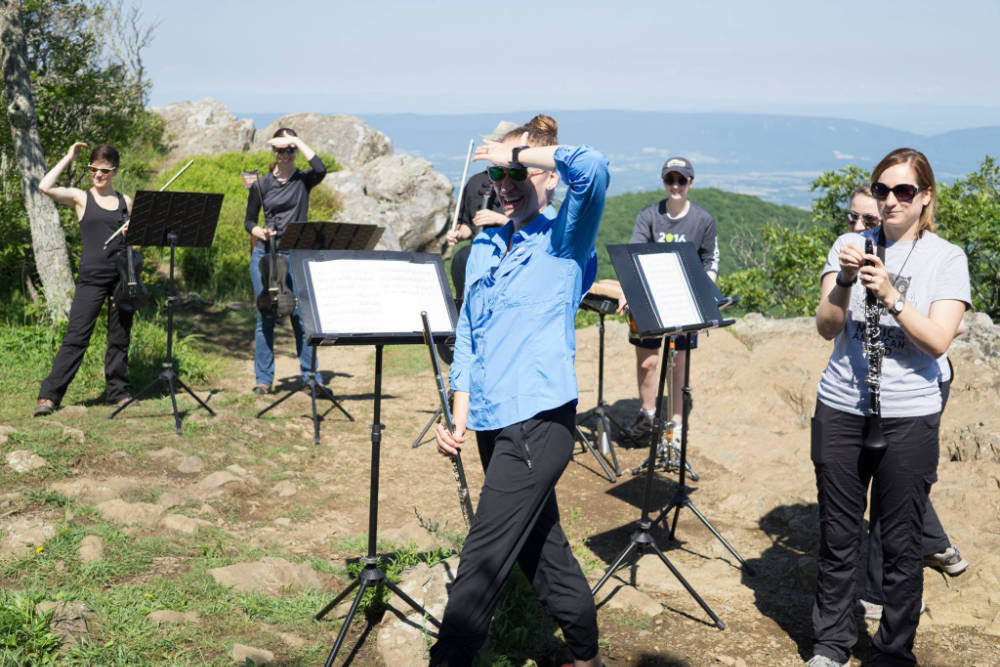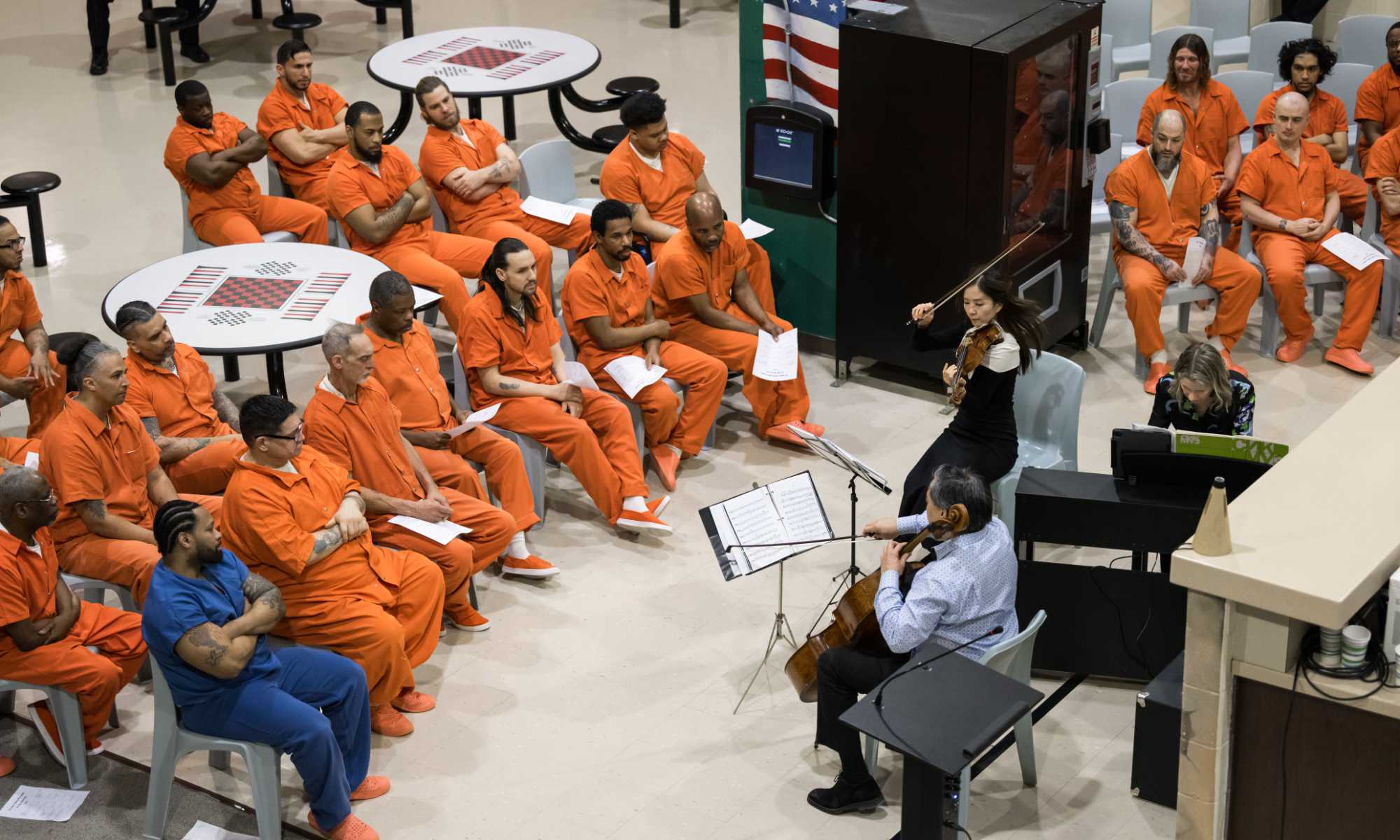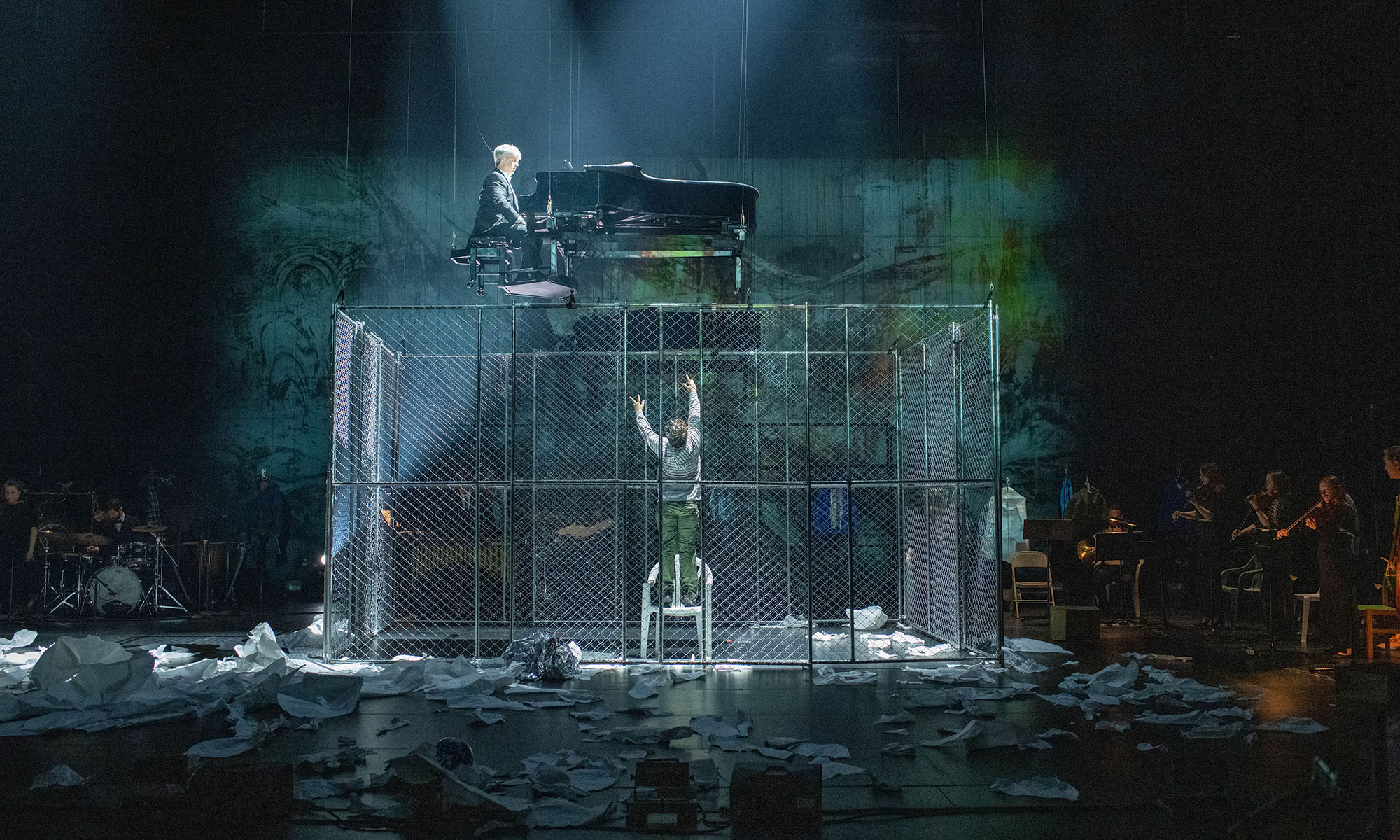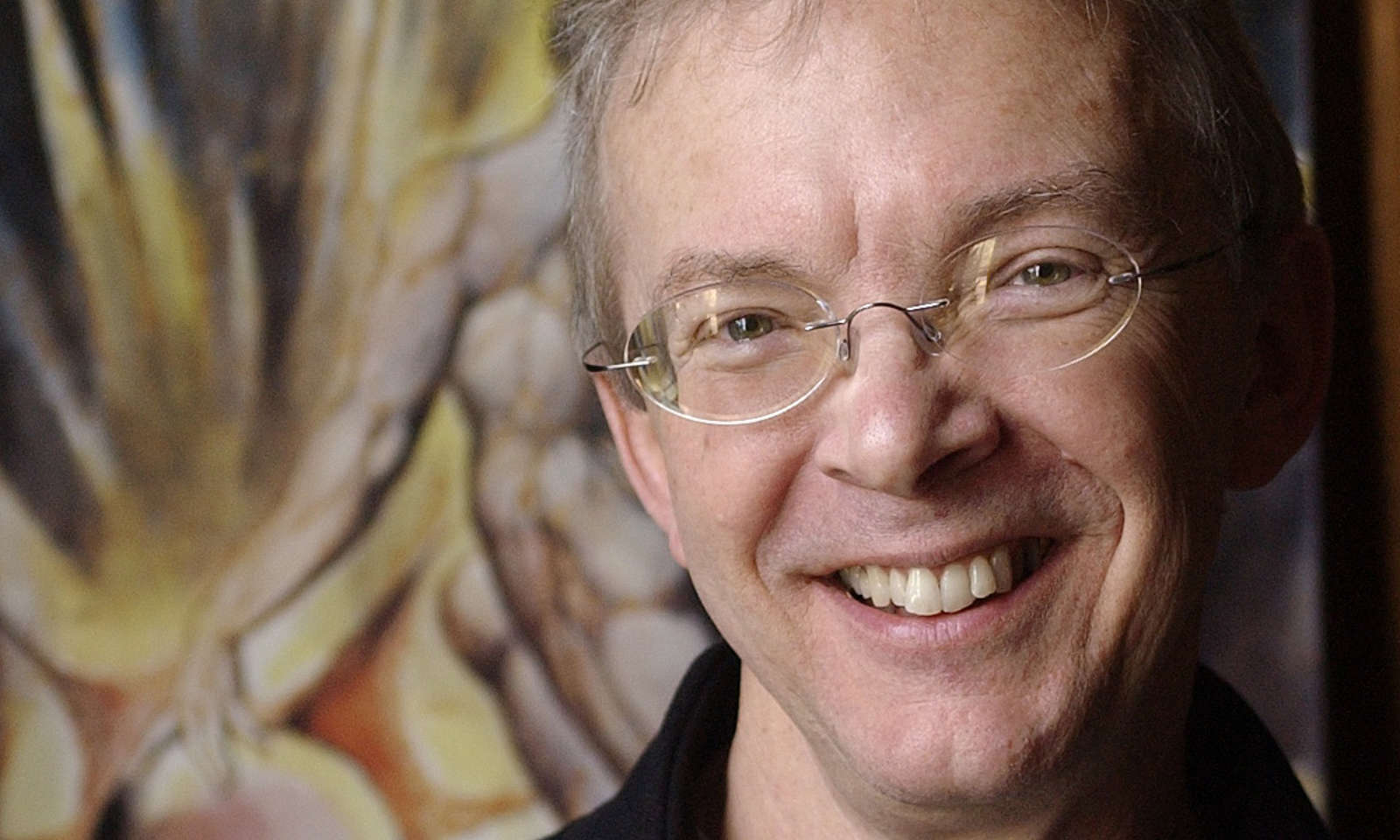An Eastman School of Music ensemble featuring students and alumni brings newly composed works to national parks.
Imagine hearing the sounds of classical music reverberating through the chambers of Mammoth Caves or echoing across the Cascade Mountains. This summer, an ensemble of musicians from the University of Rochester’s Eastman School of Music is performing from sea to shining sea, bringing newly composed works to majestic locations during the National Park Service’s centennial year celebrations.
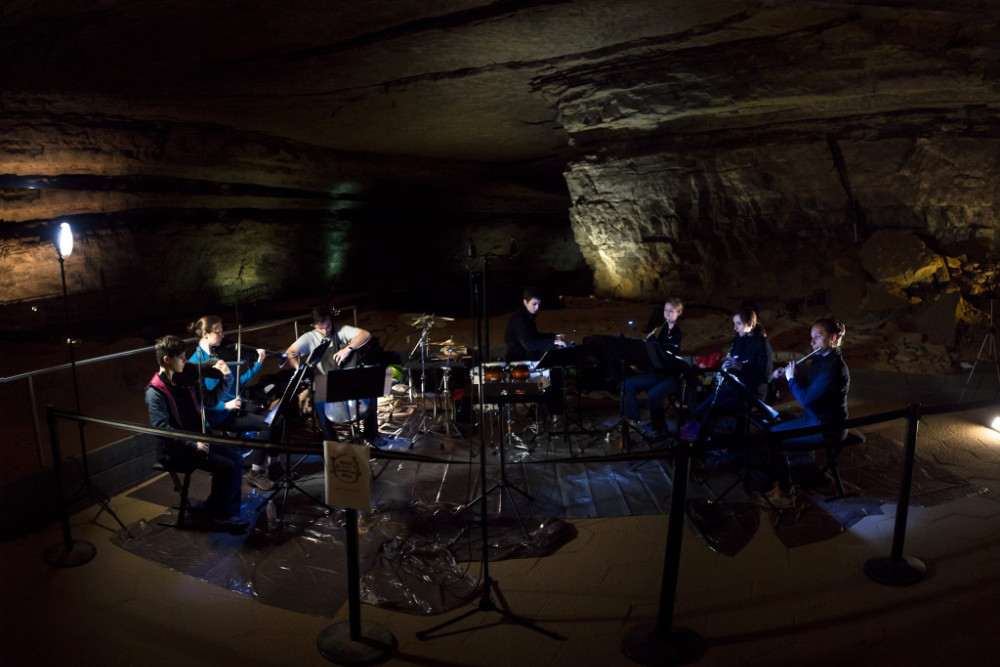
“In this increasingly digital age, it’s easy to forget that for most of its history music has been inspired by the natural world, whether that meant the imitation of birdsong or exploring man’s relationship with his surroundings,” said flutist and Eastman alumna Emlyn Johnson, who initiated and directs the Music in the American Wild project.
“We are excited to celebrate and reconnect with the creative spark offered by our own backyard wilderness, and we hope to inspire audiences and other artists to connect with our national parks through creative acts.”
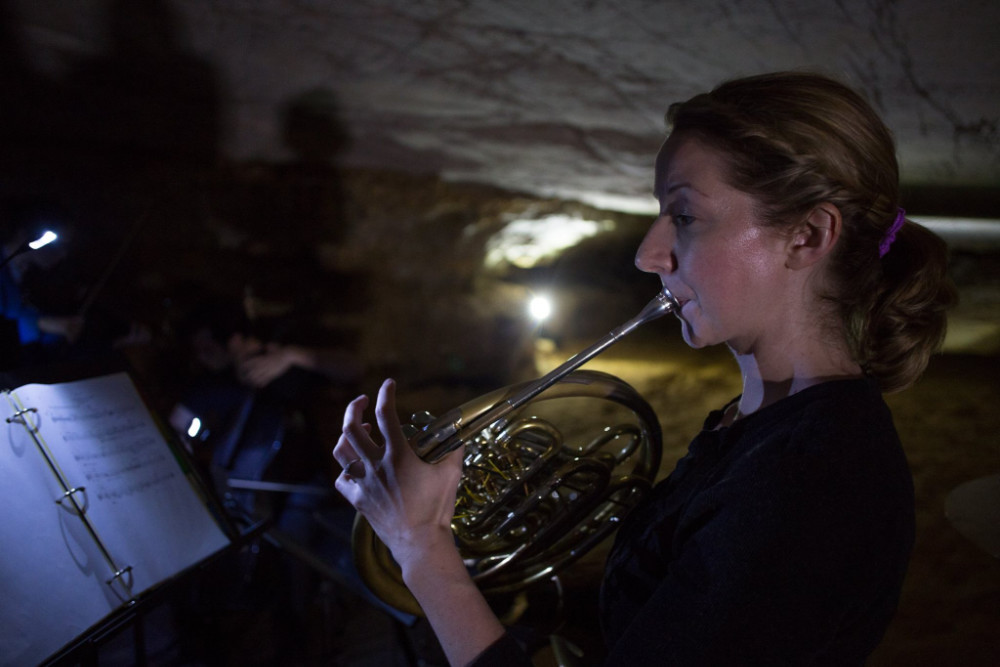
Eleven composers and eight performers, all affiliated with Eastman, have come together to fill iconic American locations with a new opus of inherently American music. Beginning June 9 in Locust Grove, a National Historic Landmark in Louisville, Ky., Music in the American Wild will enhance visitors’ experiences in 12 national parks and historic sites.
In addition to the anonymous instrument gift and in-kind support, Music in the American Wild was awarded a $20,000 National Endowment for the Arts (NEA) Art Works/Imagine Your Parks grant. This NEA initiative created in partnership with the National Park Service to support programs that use the arts to engage people in places and landscapes in the National Park System. This year marks the 50th anniversary of the NEA and the 100th anniversary of the National Park Service.
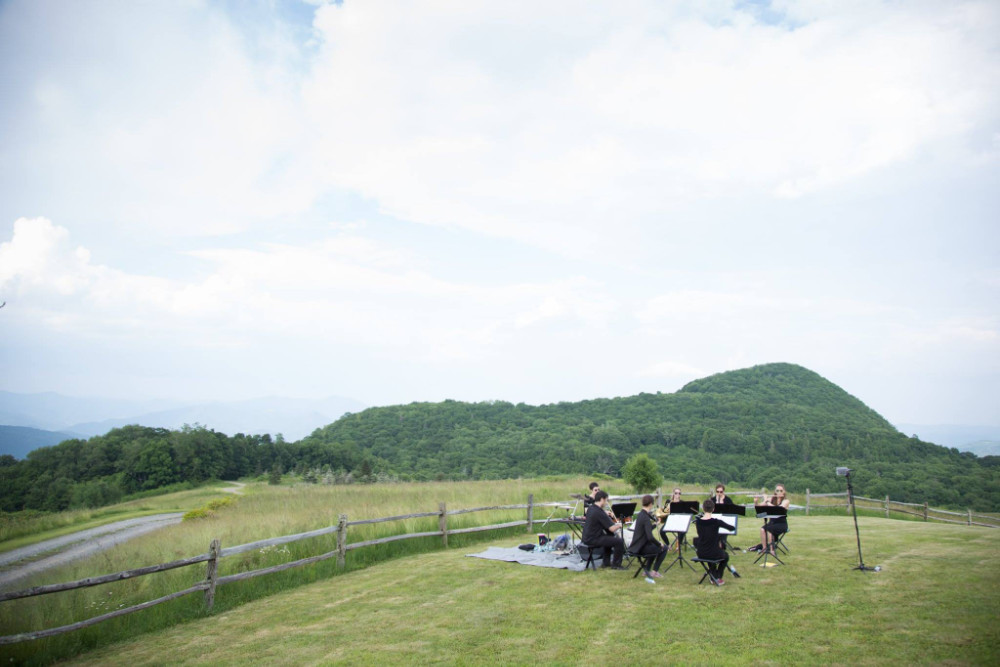
“We are thrilled at the NEA’s recognition of Music in the American Wild, which makes it possible for us to bring music to audiences across the country and inspire a new generation of listeners to become stewards of two of our country’s greatest assets: the arts and the parks,” said Johnson.
Johnson, who received her Bachelor of Music in 2008 and her Doctor of Musical Arts in 2015 at Eastman, was inspired to launch Music in the American Wild two years ago while hiking in New York’s Letchworth State Park, known as the “Grand Canyon of the East.” She commissioned 11 works that celebrate specific places or explore abstract ideas about humans’ relationship with nature, and recruited fellow musicians who share her passion for the outdoors to perform them.
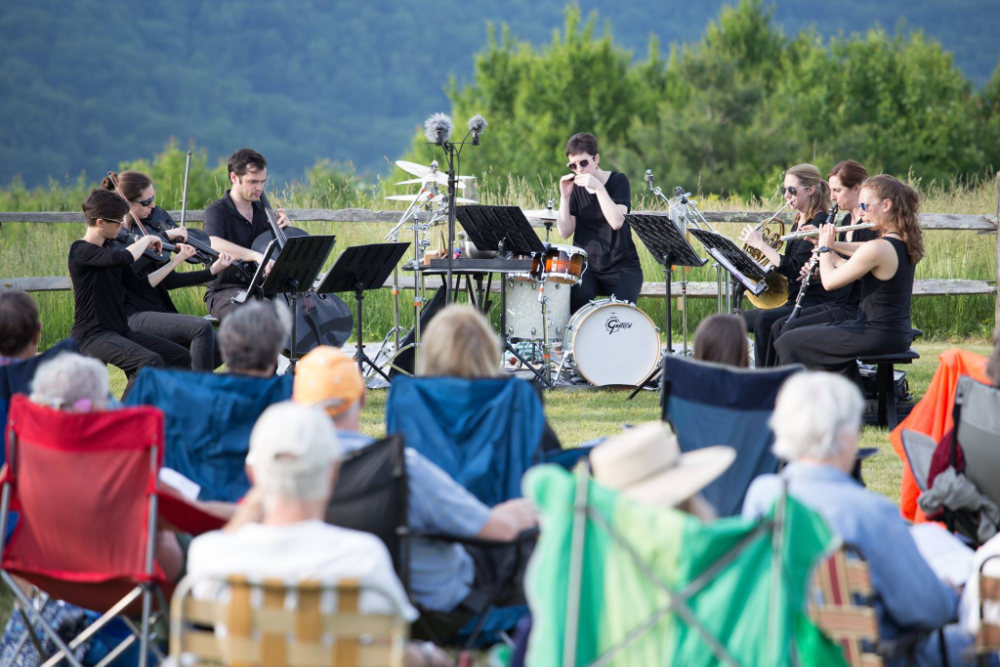
Working in locations ranging from caves to mountaintops to indoor theaters, Johnson is setting up and tailoring each acoustic concert program to its venue so that listeners can hear and enjoy how the music interacts with the environment. An anonymous donation of Luis and Clark instruments—a carbon fiber cello, violin, and viola—is helping Johnson solve some of the challenges of outdoor performance. The carbon fiber instruments, she noted, are stronger and hardier in different environmental conditions such as changing humidity, and produce a powerful sound that can be heard clearly outdoors.
Field recordings and short videos made along the Music in the American Wild tour will be streamed and archived online. In the fall, the musicians will present a concert at their alma mater and head into the studio to make a formal recording of the music.
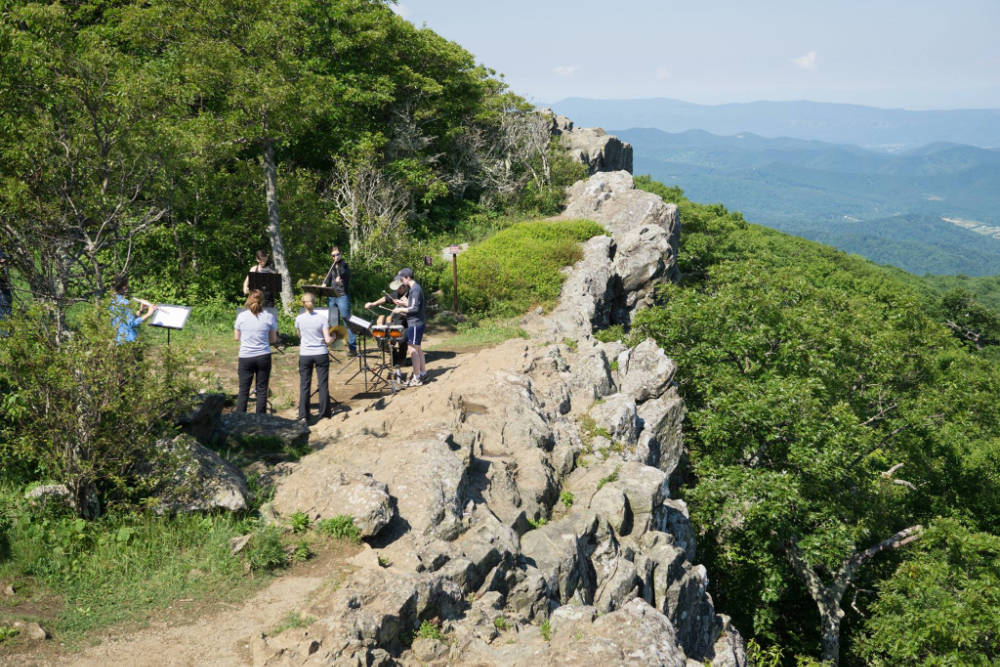
Performers
- Emlyn Johnson, flute/director
- Ellen Breakfield-Glick, clarinet
- Lauren Becker, horn
- Hanna Hurwitz, violin
- Jeremy Potts, violin
- Emily Cantrell, viola
- Daniel Ketter, cello/assistant director
- Colleen Bernstein, percussion
Composers
Chris Chandler, Kevin Ernste, Ted Goldman, Tonia Ko, Aristea Mellos, David Clay Mettens, Jeff Myers, Robert Morris, Daniel Pesca, Adam Roberts, and Aaron Travers.
Locales
The group kicked off their performances in Kentucky and continued into Tennessee and Virginia. After a break, the group will perform a special concert back home in Rochester at the George Eastman Museum and then proceed to the western leg of their tour in Washington state.
Slated stops on the tour include:
- Locust Grove, Louisville, Kentucky
- Mammoth Cave National Park, Kentucky
- Great Smoky Mountains National Park
- The Theatre at Washington, Virginia
- Shenandoah National Park, Virginia
- Smithsonian American Art Museum, Washington, DC
- George Eastman Museum, Rochester, New York
- San Juan Island National Historical Park, Washington
- Chapel Performance Space at the Good Shepherd Center, Seattle, Washington
- North Cascades National Park, Washington
- Mount Rainier National Park, Washington
- Olympic National Park, Washington
